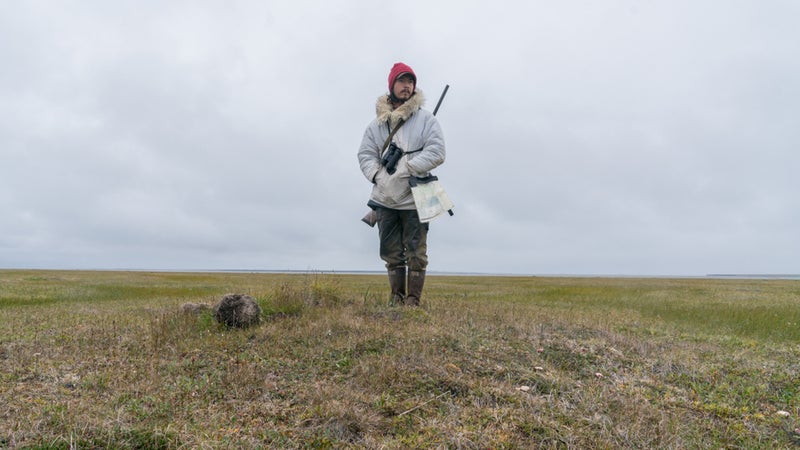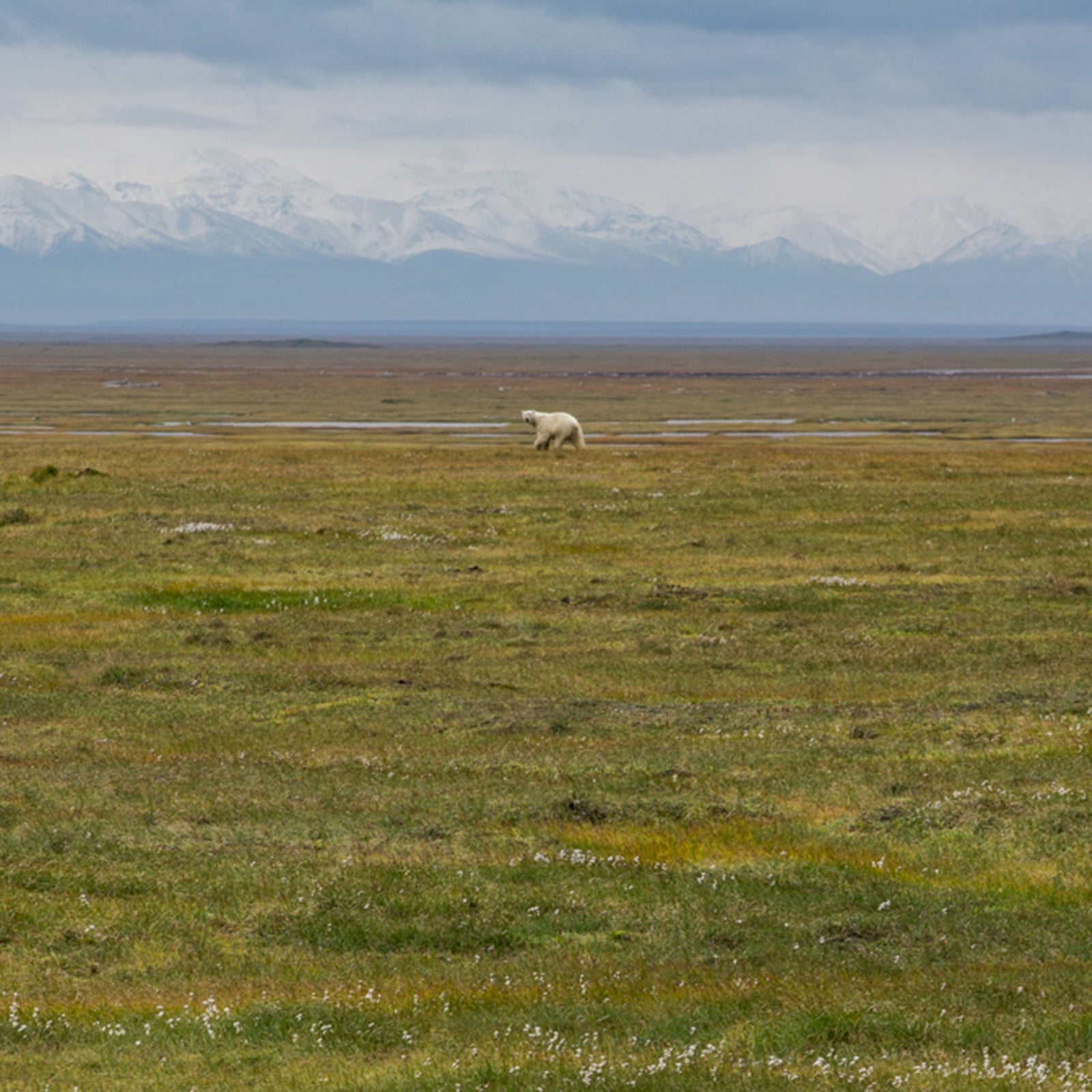The newest miniseries from the environmental podcast╠ř, which launched on November 5, opens with shouting. A man chants, ÔÇťDrill, baby, drill,ÔÇŁ as a crowd roars. Then╠řa woman leads a call-and-response: ÔÇťWhose lives? Our lives! Whose planet? Our planet!ÔÇŁ In the middle of the brawl? The Arctic National Wildlife Refuge, a South CarolinaÔÇôsize╠řchunk of northeast Alaska that was opened to drilling by the November 2017 tax bill. The legislation, along with cutting the taxes of╠řcorporations and some individuals, included a number of such deal sweeteners for skeptical lawmakers.
As , ThresholdÔÇÖs host, says early on in the series, the refuge is public land, and so the decision to drill there╠řbelongs to all of us.╠ř(No extraction has actually taken place yet, and╠řthe Trump administration recently╠ř╠řthat will delay any drilling there╠řby at least another year.)╠řÔÇťThere is something about a place that you havenÔÇÖt been to, and that you may never go to, that opens itself for imaginary power,ÔÇŁ Martin says. As a symbol, whether for American energy independence or unspoiled wilderness, ANWR╠řhas been at the center of national political debate for decades.╠řMartin and her team set out to ÔÇťinject some light into that heat,ÔÇŁ as she says in the first episode.
Threshold, which is produced independently out of Montana╠řand╠řfunded by the and , has spent the last two and a half years unraveling contentious environmental questions through on-the-ground reporting and interviews with stakeholders whose voices donÔÇÖt often make it into the national media. Its , released in 2017, looked at the politics of bison restoration in the American West, talking to skeptical ranchers, indigenous hunters, and federal conservation biologists. In , Martin and producer visited every country╠řin the Arctic to understand how climate change touches lives across the region.
In the course of that reporting, Martin told me, she struggled to fold ANWR into the larger story of the Arctic. While the issuesÔÇöquestions of cultural preservation and who benefits from resource extractionÔÇöare largely the same as those across the Arctic, ANWR has taken on such an outsize role in current political debates that she felt it deserved its own place under the microscope.
Hence the new miniseries, whose╠řreporting╠řcircles around the refuge, from the╠řanti-drilling interior town of Arctic Village to the more drilling-friendly╠řcity of╠řKaktovik on the North Slope. Rather than pursue one unifying story, the podcast digs into a string of personal, intersecting ones that span a range of attitudes toward╠řANWR. First╠řthe producers take a trip led by Kaktovik-born polar bear guide Vebjorn Reitan. Reitan opposes drilling in the refuge, but his opinion is tempered by the recognition that his Norwegian citizenship and overseas education give him unusual job opportunities. For him, the oil industry isnÔÇÖt an economic lifeline like it is for many of his neighbors, who we meet in following episodes.╠řHis story leads into the history of the refuge╠řand that of the conservationists who have fought to protect it, with pit stops in oil towns along the way. In later episodes, Martin says, Threshold will╠řexplore Alaska senator Lisa MurkowskiÔÇÖs complicated role as a pro-drilling, climate-change-affirming Republican.

Martin says that pushing back against the romanticized╠řArctic╠řand diving into its intricacies doesnÔÇÖt mean taking its beauty and symbolism for granted.╠řÔÇťIÔÇÖm not trying to take away the power of the place or say that we shouldnÔÇÖt find it magical and wonderful,ÔÇŁ she says. ÔÇťI donÔÇÖt think being there has made it one bit less fascinating to me.ÔÇŁ Indeed, when she and Mott first arrive at the shoreline of ANWRÔÇÖs╠řcoastal plain, where drilling would occur,╠řafter╠řa long boat ride from Kaktovik, Martin compares the scene to a Rothko:╠řhuge, gray expanses of sky and water╠řseparated by a line of green that happens to be the center of this controversy.
However, she does think that getting beyond the╠řheadlines about the area is important.╠řNewcomers arrive at╠řthe refuge feeling╠řas though they already╠řunderstand the place, she says, because ÔÇťthe Arctic in general has often served as this giant projection screen.ÔÇŁ╠řBut thatÔÇÖs whatÔÇÖs so easily lost when we imagine a place like Arctic National Wildlife Refuge, or even Bears Ears in Utah: the places weÔÇÖre fighting over at a distance are also homes, full of people working to shape their own futures. Plenty of people╠řin Kaktovik and Arctic Village are familiar with national reporters; some have even chatted with President Obama or testified before Congress. ÔÇťThat flipping of the script is a way to bring some humility to the conversation,ÔÇŁ Martin says, ÔÇťwhether youÔÇÖre passionately pro oil or passionately anti oil, to understand that the people who live closest to it have something to teach, just in the fact that they know more about the rest of the world than we know about them.ÔÇŁ


